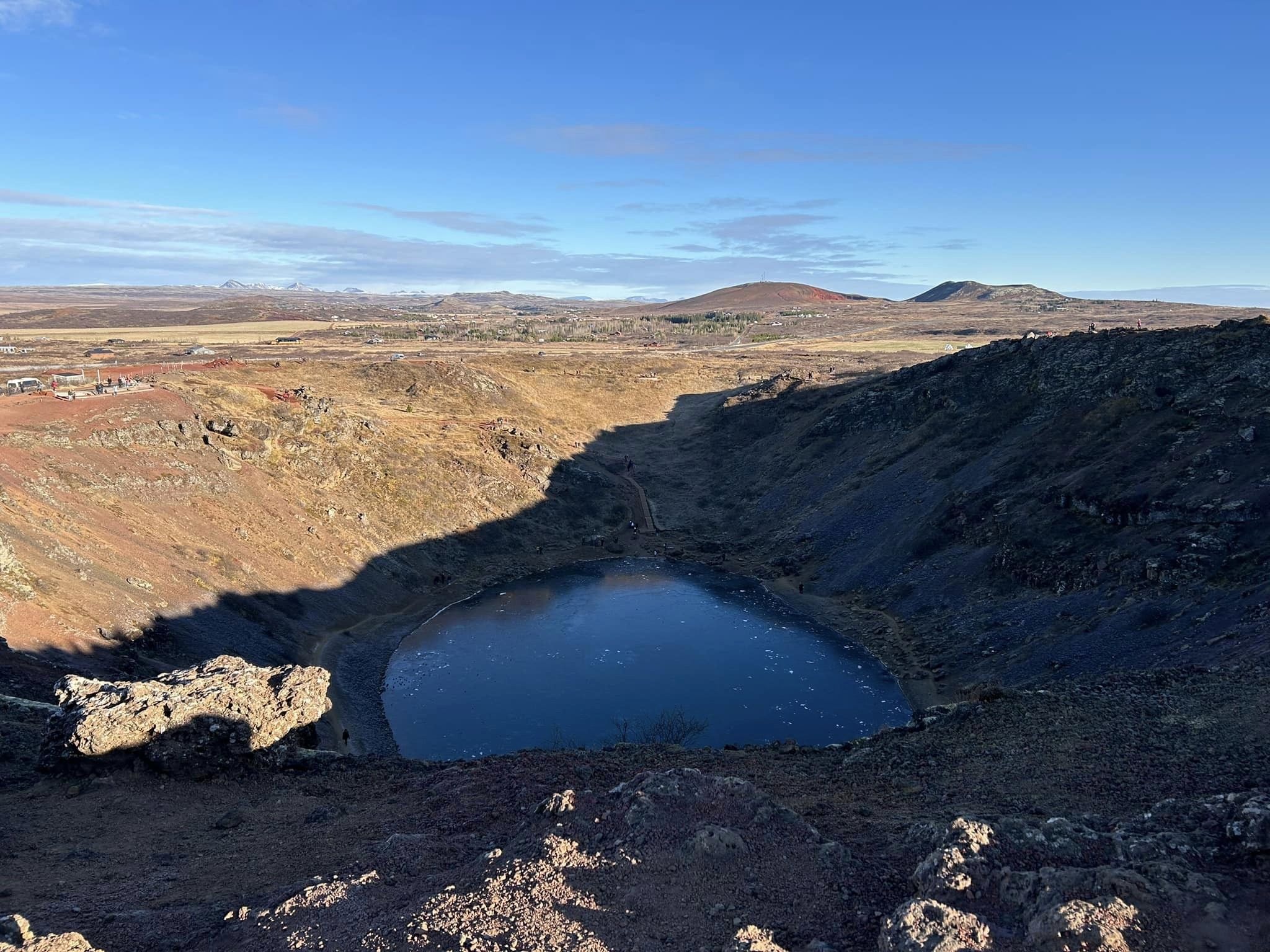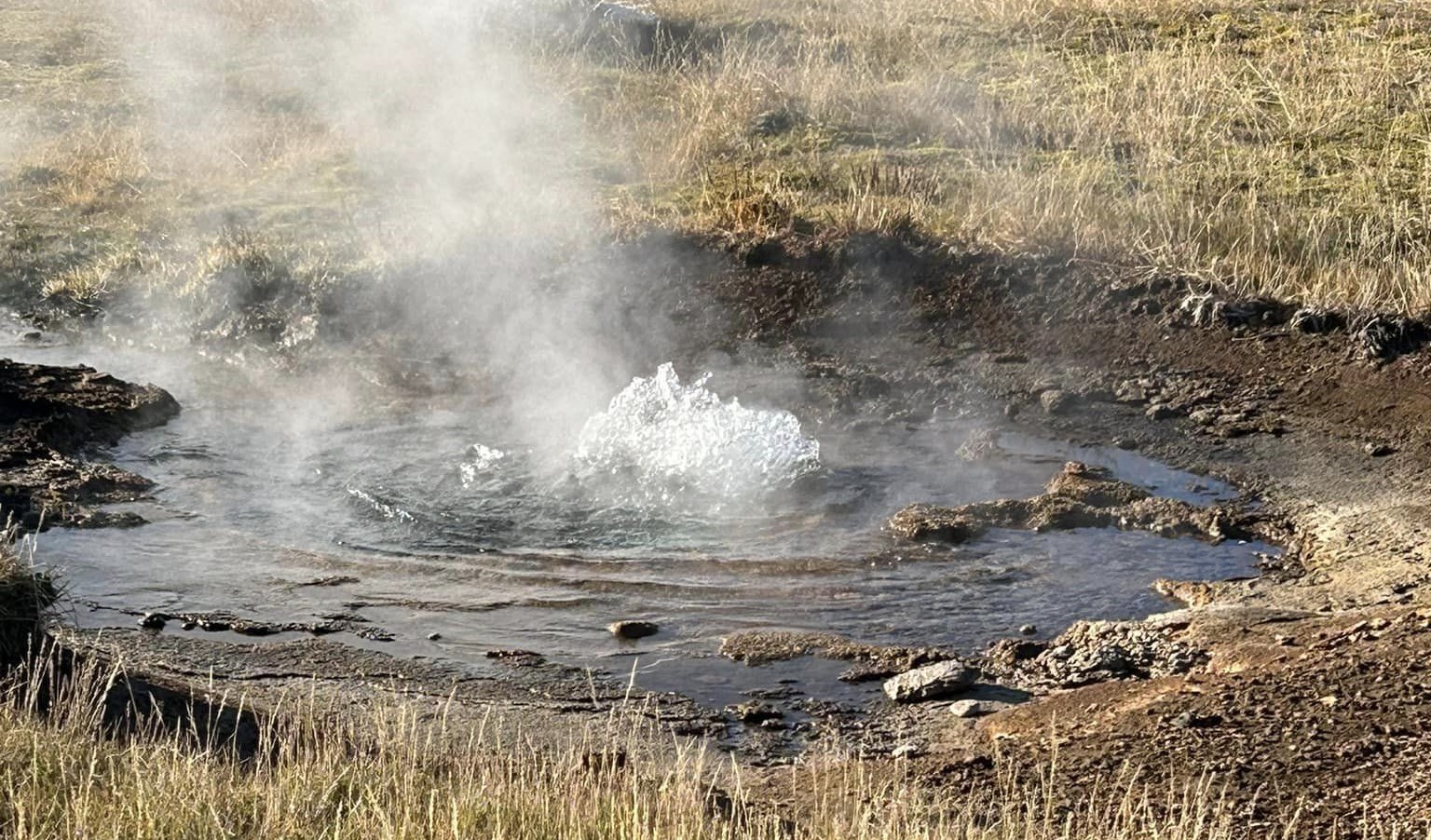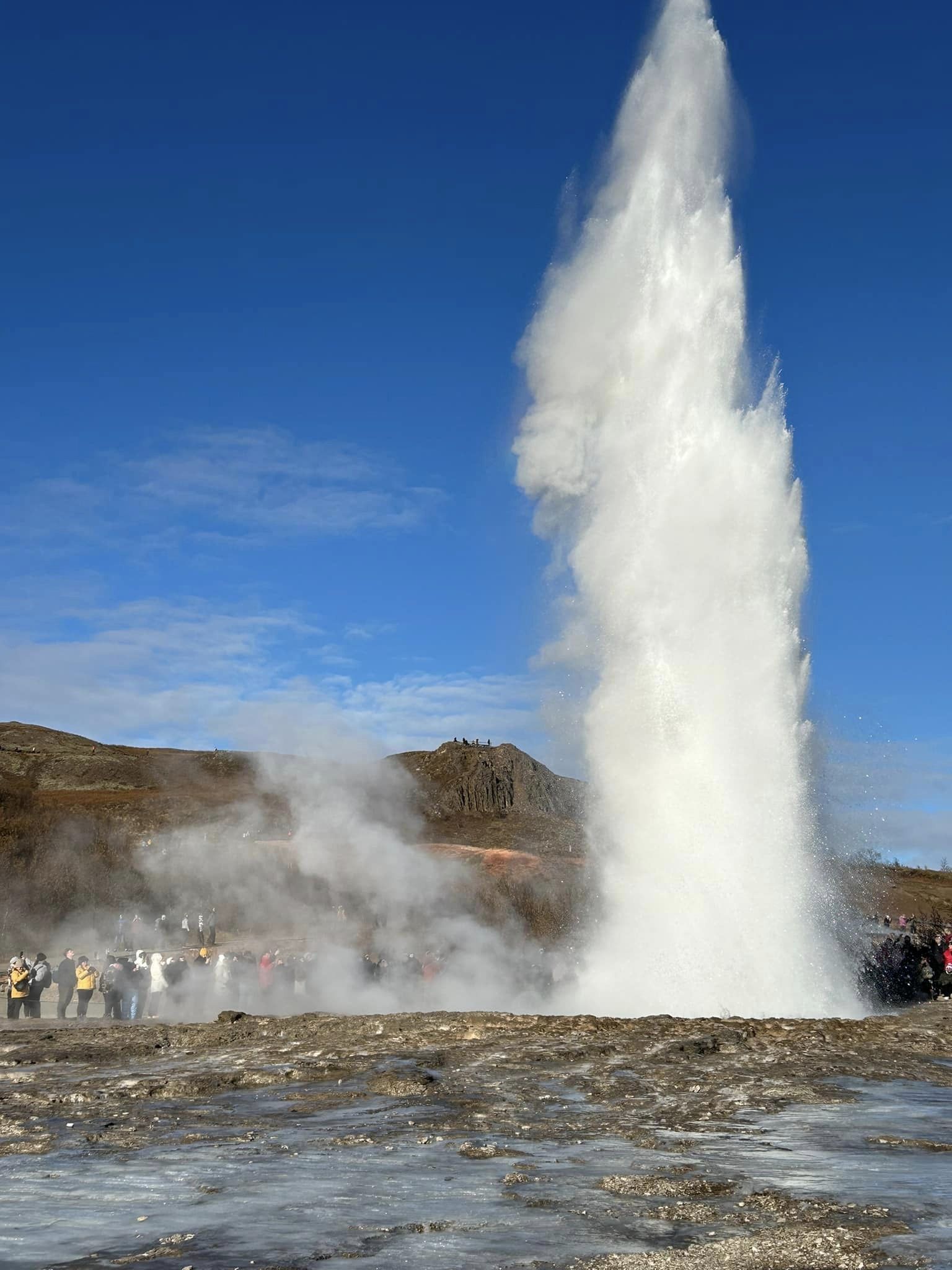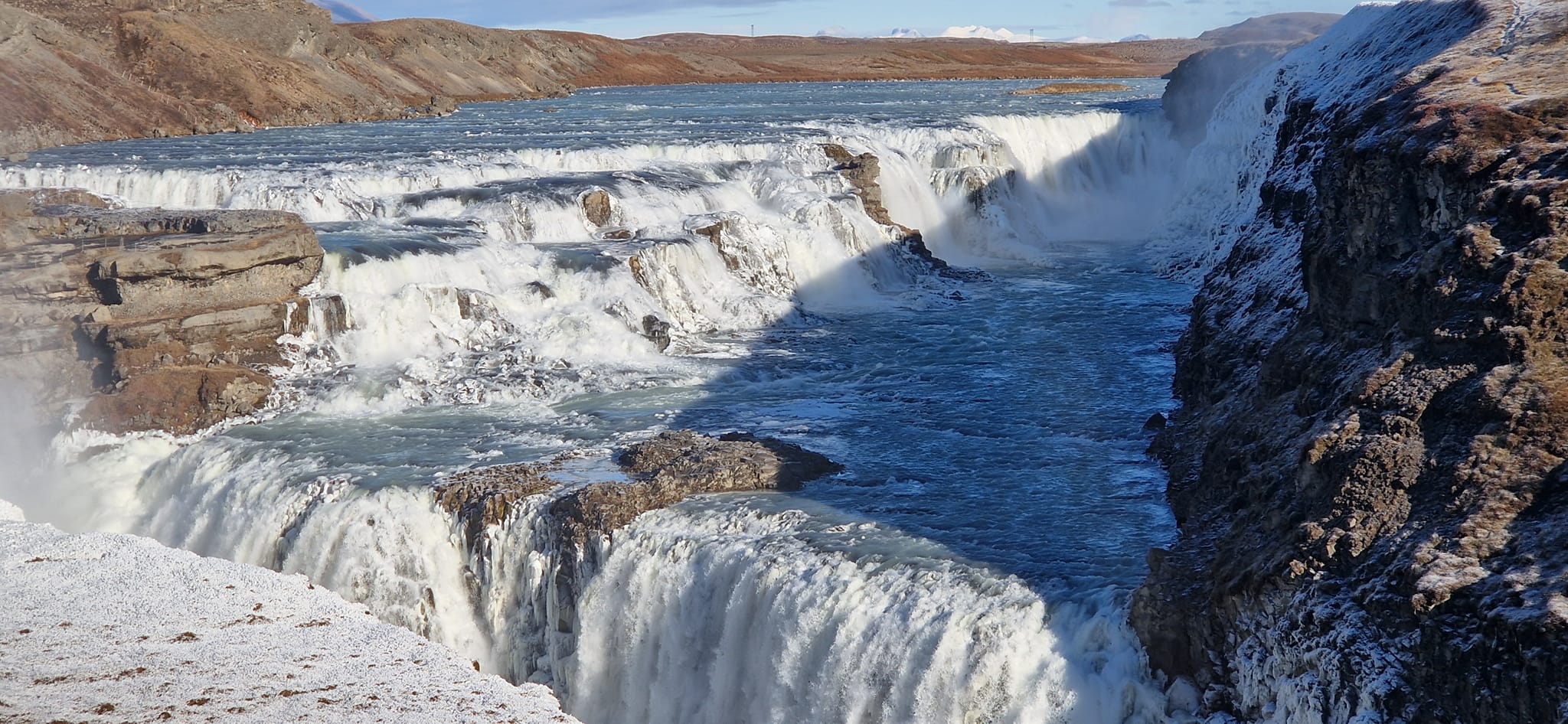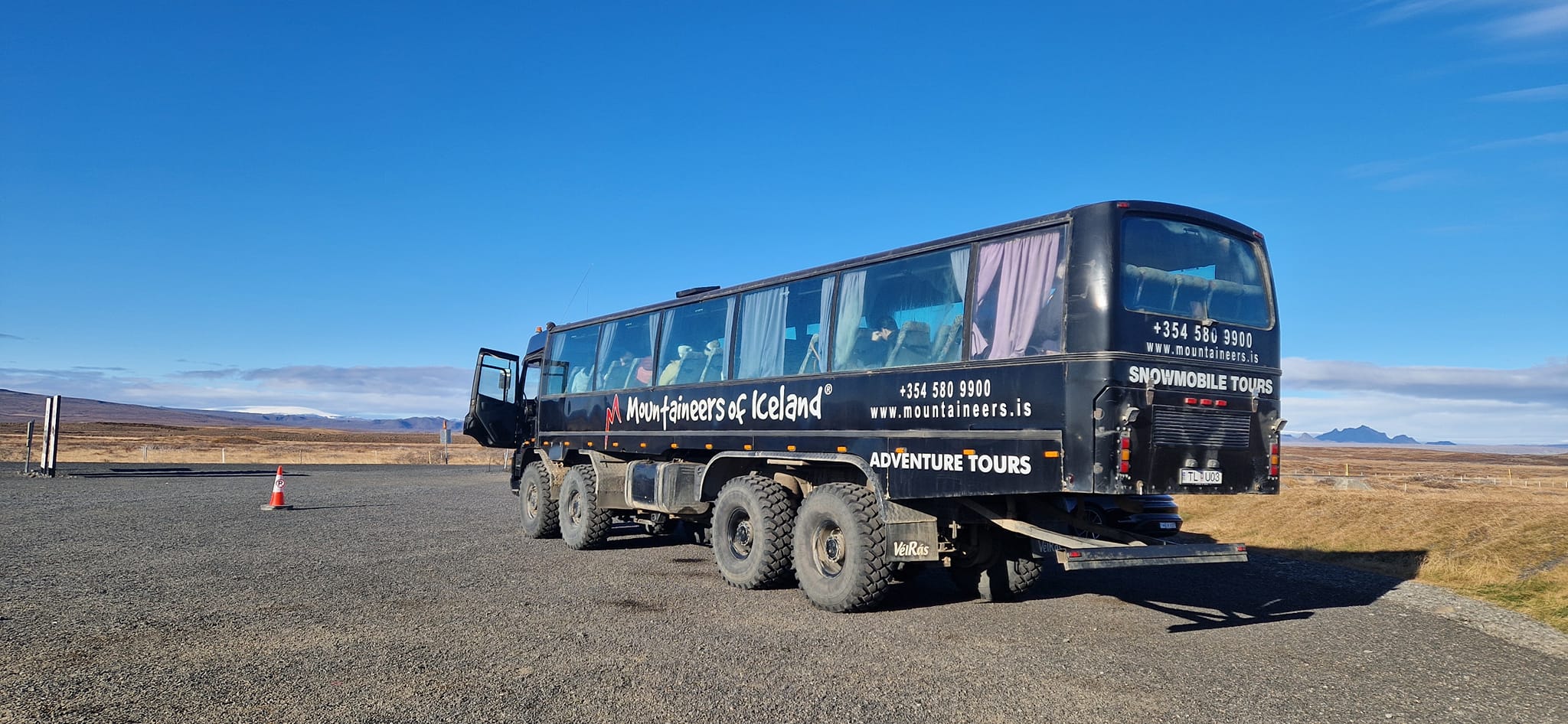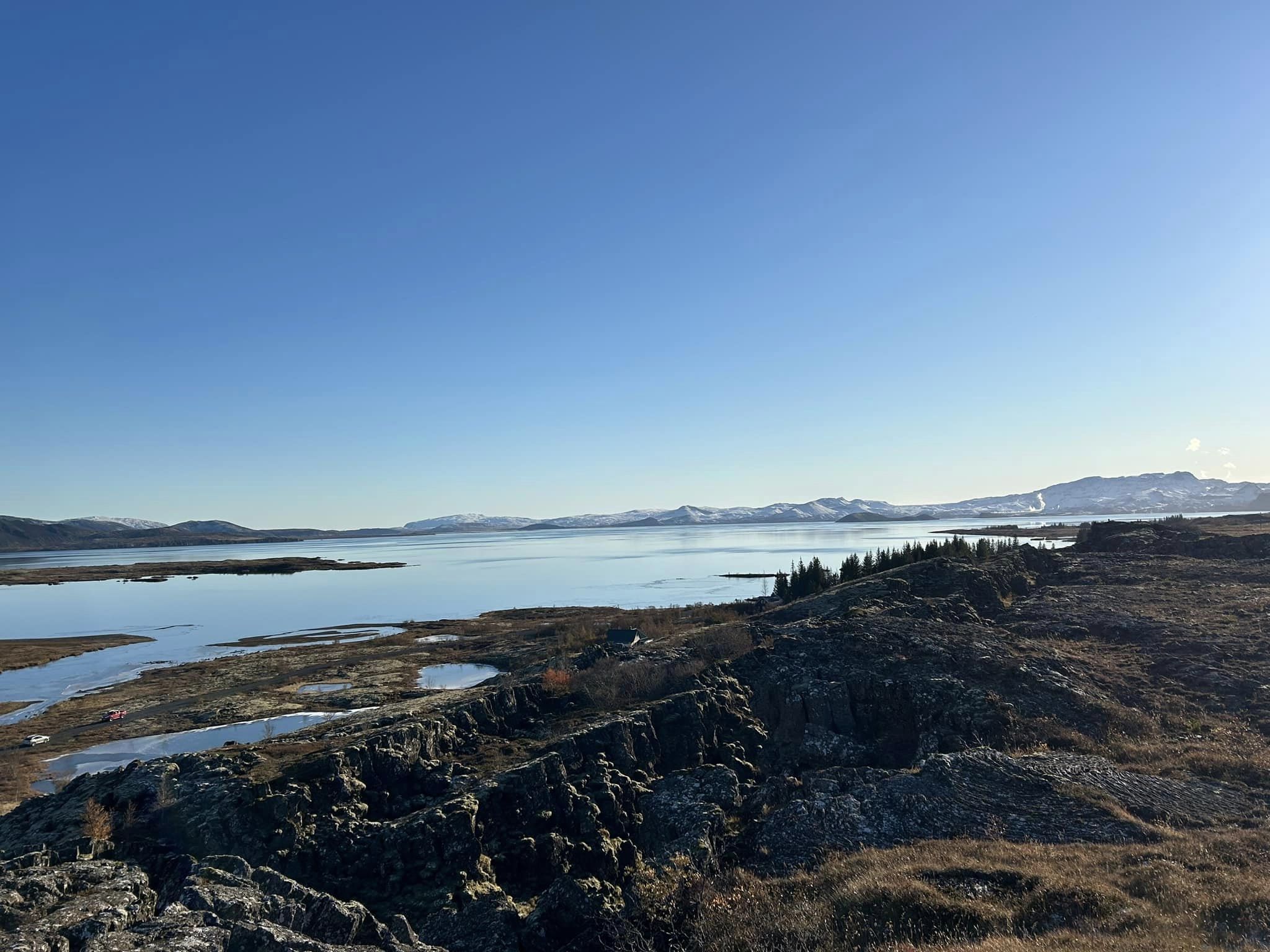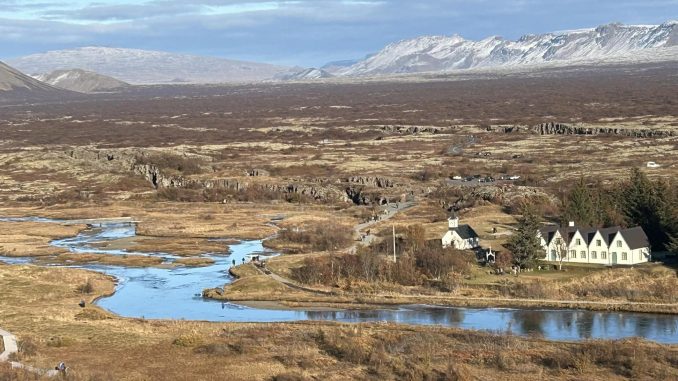
Last full day in Iceland and we have saved the best for last. The legendary Golden Circle Tour.
We always like to have at least one extra day after the game for a rest. Travelling straight after the game can be exhausting. We weren’t going to get much of a rest today though. Iceland has so much to offer it would be a tragedy to not rinse every last minute out of it. Today we are doing what is generally considered by many as the best ‘day trip’ of them all. The Golden Cirlcle. There are quite a few variations that include various lagoons, the most popular being the Blue Lagoon.
It’s funny, The Blue Lagoon had been top of our list of things to do when we first booked this trip, apparently it’s a ‘must see’, but all the locals are very dismissive. It’s a man-made attraction built specifically for tourists, so we eventually decide to give it a miss. Not because we are above that sort of thing, it’s just about priorities. There’s so much else to see.
We are stood on the bus stop at 9 of the AMs, at -6 degrees of the centigrades. We go through the now standard routine of getting excited every time a bus pulls up thinking ‘is this ours?’ There’s an incredible number of tour companies running out of Reykjavik every day, going off to do a wide variety of activities, in a wide variety of vehicles. We have even seen stretched 4x4s.
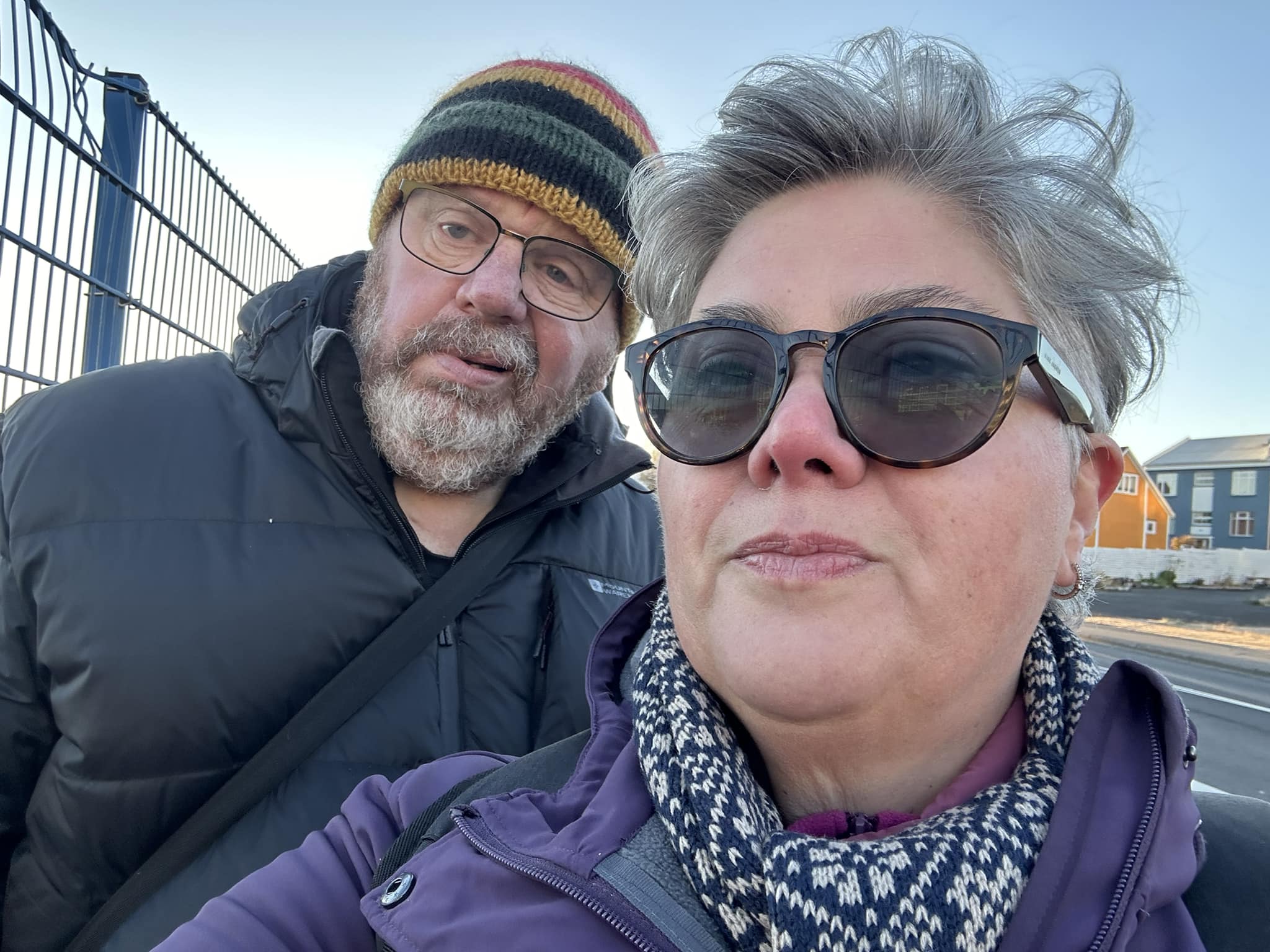
We are not actually sure what sort of vehicle to expect today. It could be a minibus or it could be a coach. It turns out, both. We are picked up by a minibus, which takes us to a bus station, where several other minibuses congregate and we all pile into a coach. The coach is already close to full when we get on and there are no double seats available.
A couple of singles kindly shuffle about to let me and the Megster sit together, but there’s one girl behind us on her own that refuses to give up her window seat for a couple when asked by the tour guide. This is going to be a very different trip to the intimate minibuses we have been on where everyone gets on swimmingly. Although it does have several advantages. The seats are more comfortable, it has a toilet, and the raised position means we get to see things we couldn’t see from the lower minibus.
Our tour guide and entertainer, yes he describes himself as an entertainer, is Denis Phoenix. Part tour guide, part holiday camp red coat, he has four masters degrees, first came to Iceland on a writer’s retreat, has written ten books and doesn’t shut up. Early in the morning he is annoying, but in fairness, we warm to him as the trip goes on. The annoyance is probably more due to us being knackered than anything else.
The initial drive replicates our South Coast tour and we get many of the stories we have already heard, including the one I haven’t mentioned before. Neil Armstrong came here to train in an ‘alien environment’, prior to going to the moon.
After scouring the globe, officials determined that the Moon’s lunar landscape was strikingly similar to that just outside Húsavík, a quiet 2,300-person fishing community on Iceland’s northern coast. Nasa sent 32 astronauts to train in its crater-filled terrain in 1965 and 1967. Incredibly, of the 12 humans who have ever walked on the Moon, nine first touched down in Húsavík – including Armstrong himself. BBC Website
Eventually our path diverges from the previously travelled route and we head north. Or maybe east. I can’t remember, but it’s not south.
Our first stop is a service station with a cafe and toilets. Denis (Did I mention the tour guide’s name was Denis? He mentioned it. Several times. In fact he mentioned it a lot, often referring to himself in the third person) takes great pride in showing us a ‘crack’ running through the floor of the building with a glass covering it so you could look down. Apparently the crack is the rift between the North American and European tectonic plates. People pose for photos with one foot in each continent. Megan and I look at each other and cry out in unison, “Is that it?”. We check the e-mail with the itinerary to see if that is, indeed, ‘it”. It’s not clear.
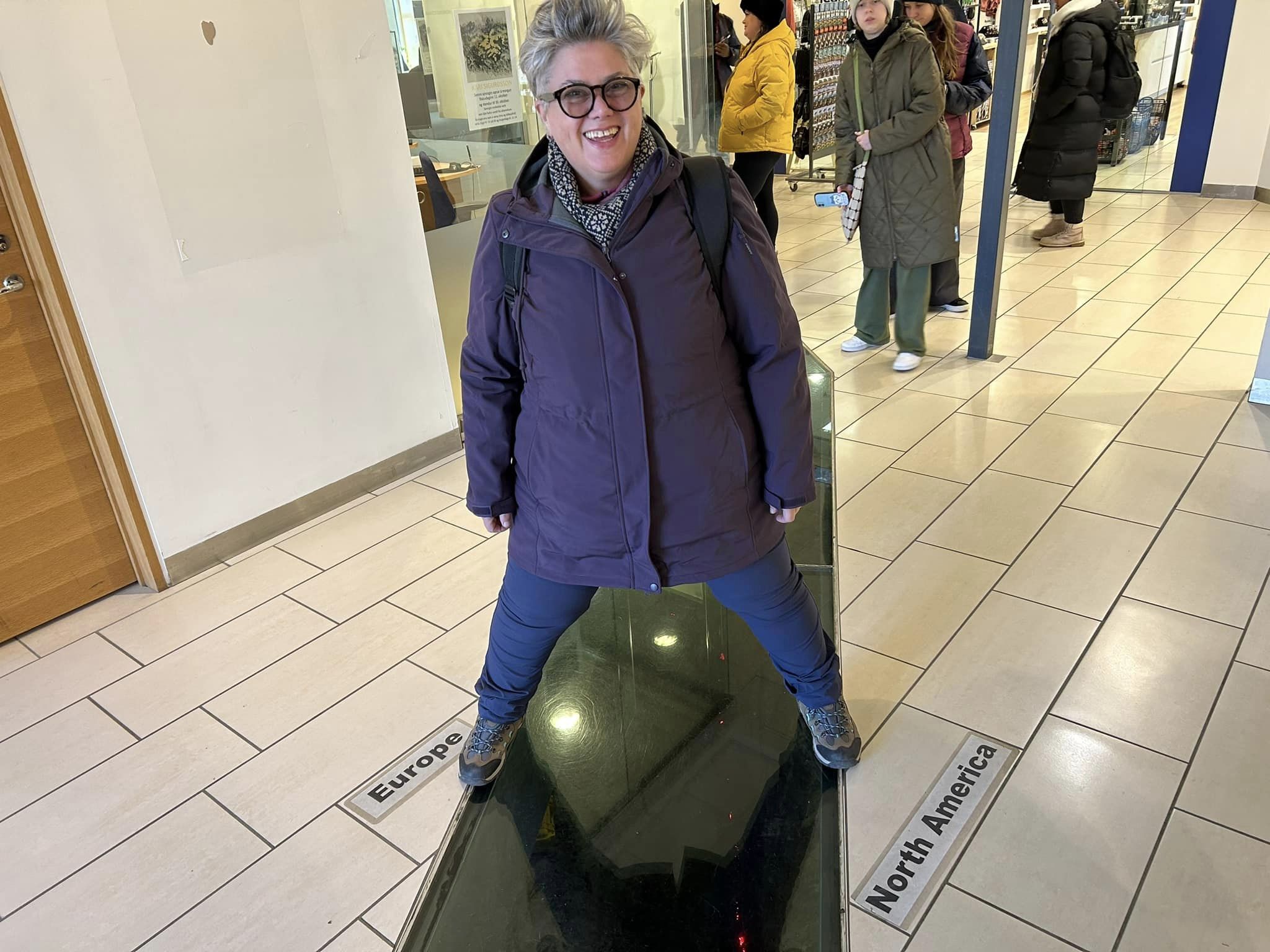
Soon we are back on the bus and Denis decides that a fun way of imparting facts would be to ask quiz questions and get us to guess things we could not possibly know the answer for. Like asking why a church we pass, whose name sadly escapes me, is unique in Iceland. The answer is, because the church is situated outside of it’s own parish. That’s because it’s parish is a geothermal hot-spot and if they had the church within the parish, the bodies buried in the graveyard would boil. Or something like that. It’s obvious when you get the answer and you kick yourself for not knowing.
Our first non service station stop is the crater of a huge fuck off volcanoe. Fortunately, it’s dormant. I walk around the rim of the crater getting photos from various angles.
At the bottom of the crater there’s a large frozen pond. Did I mention its a bit nippy out today? In the background are snow-capped mountains/volcanoes. It’s hard to tell the difference in this neck of the woods.
Kerið, a volcanic crater lake located in the Grímsnes area in south Iceland, is one of the most visually stunning geological wonders in the country. This vibrant blue gem, which is part of the Western Volcanic Zone that includes the Reykjanes peninsula and the Langjökull Glacier, is a mere 6,500 years old – making it one of the three most recognizable volcanic craters in Iceland. The caldera is approximately 55 m deep, 170 m wide, and 270 m across, and is made up of a unique red volcanic rock. About Kerið Volcano – Kerið Volcanic Crater (kerid.is)
There’s a deadline for getting back to the bus though, we have a lot to get through today, and soon we are on our way to see the Strokuur Geysir and hot springs. There are several geysirs that have spouted up through the earth’s crust to conveniently appear next to a visitor centre, car park and cafe.
Most people nonchalantly walk past the hot springs. In any other location they would have been a source of wonderment, with their bubbling pools, close to boiling point, despite the sub zero temperatures. But the knowledge that there’s a much bigger one just up the path causes many people to wander past the prehistoric water feature, to see the main attraction, Strokuur Geysir
The geysers in Haukadalur lie in an active geothermal area. As a result of this underground plumbing system, ground water comes into contact with hot bedrock and heats up, building pressure. When the water has reached peak temperature and pressure it sprouts out from the geyser and into the air. The water is extremely hot.
The area became active more than 1.000 years ago and consists of more than a dozen hot water blow holes. The oldest account of the Geysir area dates back to 1294. Earthquakes in southern Iceland caused changes in the geothermal area and created several new hot springs. Geysir Hot Spring Area & Strokkur, Golden Circle | Iceland Travel
We watch the geyser spout hot water up into the air a few times, like a giant bidet for Trolls, then head to the visitor centre for lunch. But the cafe is rammed, so we make do with a drink and a snack we had brought with us. Not everyone takes the same approach and are reprimanded by Denis for being late. Apparently the punishment is that the late arrivals have to buy everyone on the bus as beer. I don’t hold my breath.
Next up, the world famous Gulfoss Falls. I feel like the term ‘world famous’ is getting trotted a lot around here. But in fairness, just about everything in Iceland is world famous, from the Northern Lights and dodgy bankers to the beer prices.
The water in Gulfoss Falls comes from a huge glacier, the second biggest glacier in Iceland, the Langjökull, that can be seen off in the distance. The water plummets down 32 meters in two stages into a rugged canyon with walls that reach up to 70 meters in height. Today is a bright sunny morning resulting in a shimmering rainbow over the falls. The water is flowing rapidly but any water that had the audacity to slow down for a bit of a whiff is frozen and the falls are framed by huge icicles.
There’s a large car park and visitor centre, as indeed there is at pretty much all of the attractions we visit today. Each of the sites are busy, but not excessively so. There’s a walk down to several viewing platforms where people are queuing up to take selfies. Now I’m as guilty as the next person for taking a lot of photographs, but it does feel like many are not taking the time to just take in the majesty of the sight before us. I could spend hours here, with tripod out, taking long exposures of the waterfalls, catching them from different angles and watching the sun shoo the shadows along the falls. But if we did that, we would not get around to seeing the many wonders Iceland has to show us. I suppose you could see this trip as a taster menu, sampling small portions of lots of different things. I had come here thinking it would be a once in a lifetime adventure, but a little bit of me is thinking about returning.
We return to the bus, ready to rush on to run around the next magical wonder. In the car park there is a ridiculous eight wheel drive monster bus that looks like it would be great fun to drive up and down the glacier in – but as mentioned in previous blog (you will have to read them all to find out which one, I cant spoon feed you everything) it is part of that complex problem known as global warming that is causing the glaciers to melt.
Then, after a surreal stop where Denis suggests we might want to stroke some artic horses that are tied up on the side of the road, we get to our final experience of the trip. And boy what an experience it is. Þingvellir National park
Þingvellir national park was established 1930. Today it is one of the most visited sites in Iceland. Þingvellir was accepted as a UNESCO World Heritage site 2004 for it´s cultural value to the world. Things to do – Thingvellir National Park
According to the Book of Settlements (Landnámabók), the settlement of Iceland began in 874, I think it was a Thursday, when the Norwegian chieftain Ingólfr Arnarson became the first permanent settler on the island. There is some dispute here, but this is where terminology is important. There were dudes on Iceland before him, such as Irish Monks, Nordic fishermen and Amazon delivery drivers that couldn’t find Greenland, but none of them made it their home, therefore he was the first settler.
But he didn’t have the place to himself for long and by 930 there were several different possees of settlers and they decided that, to keep the peace they should set up a parliamenty type thing. As it happens, it was the first parliament in the world. And the parliament building is still here in the National Park. It’s in pretty good condition considering its age. I suspect it’s a bit like Trigger’s broom, with several new walls and roofs over the years.
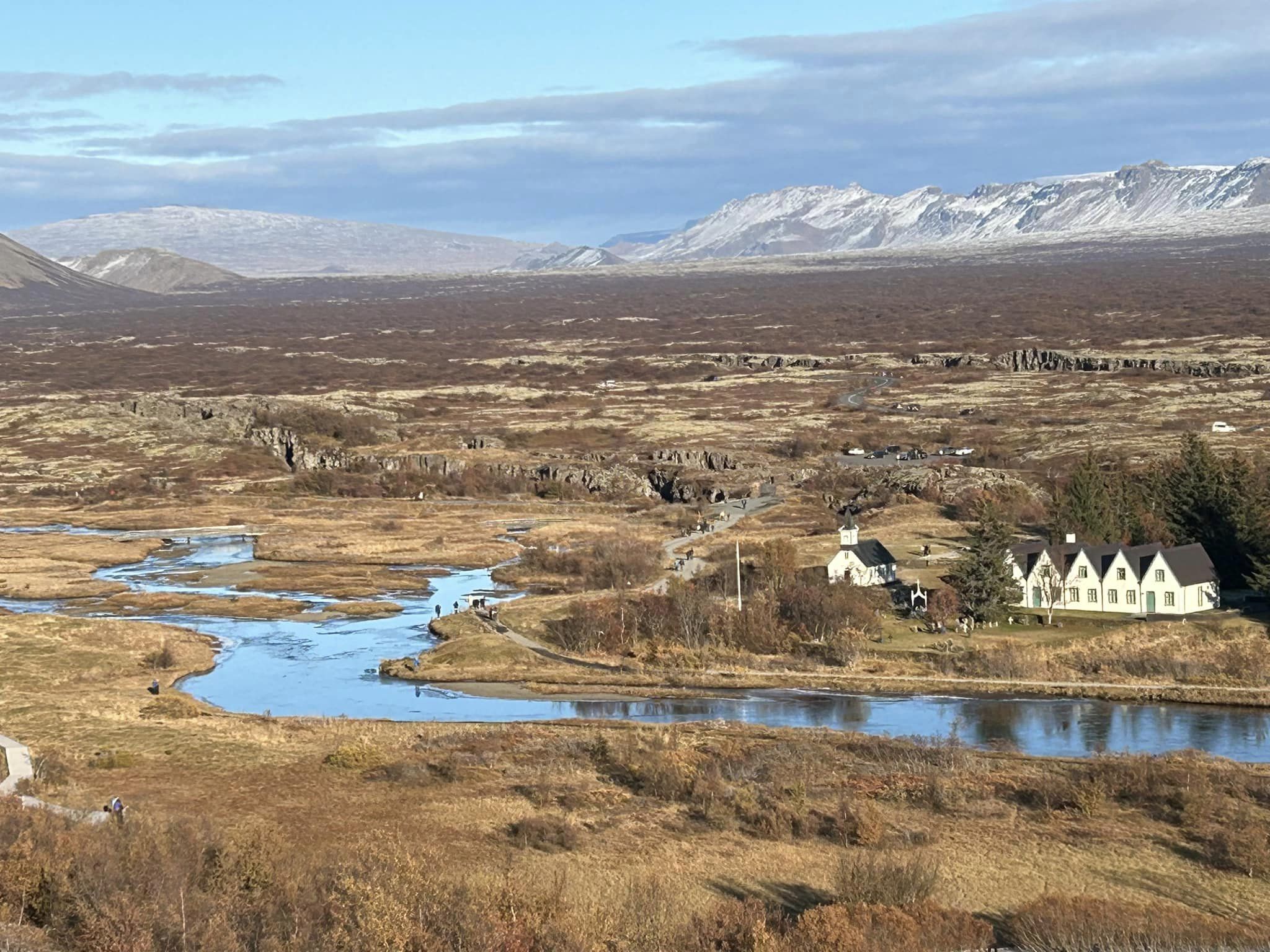
The parliament didn’t last forever though. The King of Norway rocked up and took over, only to be replaced by the King of Denmark.
And there was something rotten in the state of Denmark. If the King didn’t like the cut of your jib, you were likely to come to a sticky end.
There were 70 – 80 executions in Thingvellir from the 17th century onwards. Of those, there are recorded 15 hangings, 30 beheadings, and 18 women who were drowned in the so-called “Drowning Pool”. The pool can be seen just in front of the ‘ancient’ parliament building. (To save you looking it up, The band Drowning Pool are named after a 1975 film starring Paul Newman and has nothing to do with this pool. You’re welcome.)
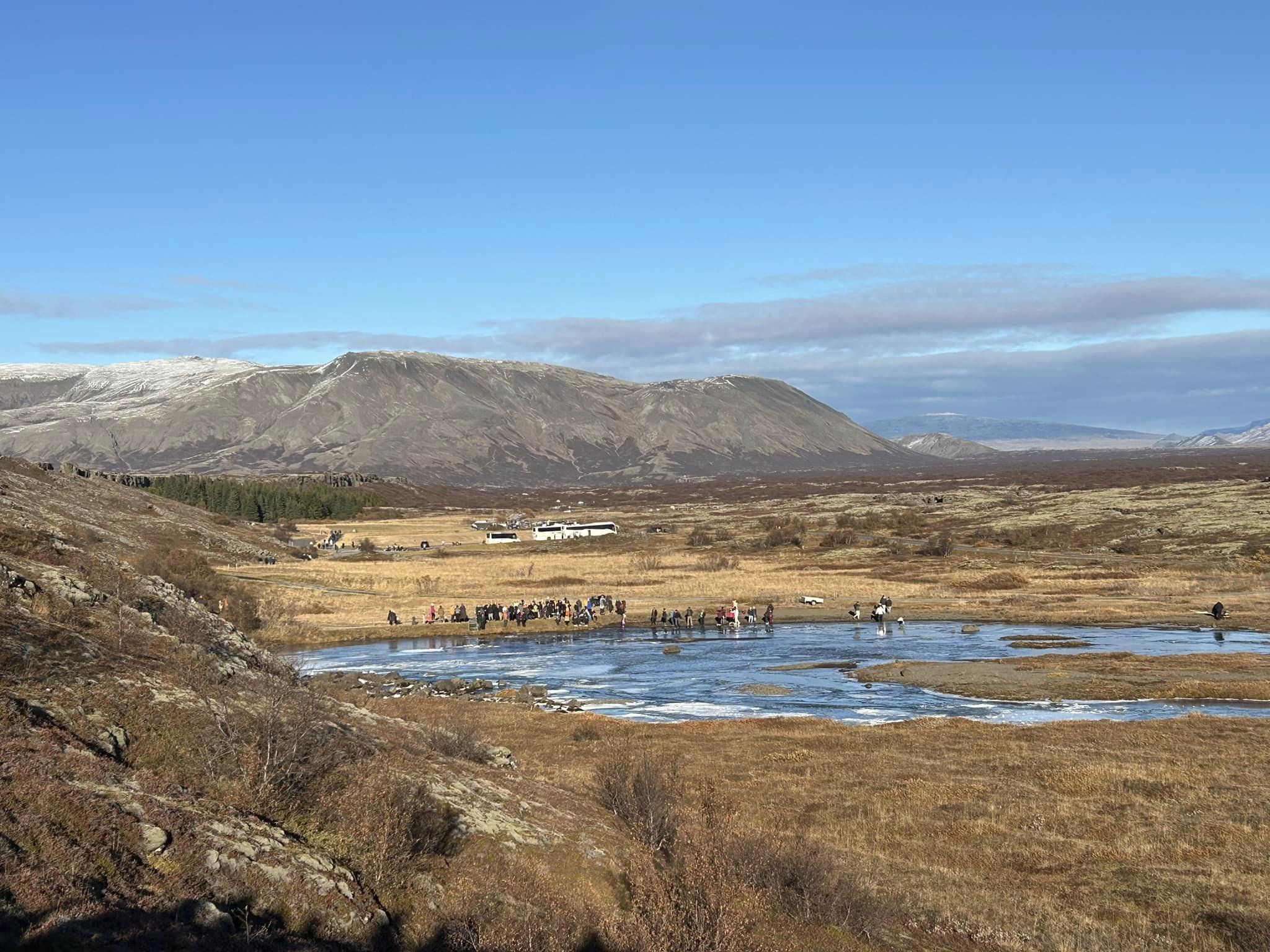
The park lies in a rift valley that marks the crest of the Mid-Atlantic Ridge and the boundary between the North American and Eurasian tectonic plates. It seems that the rift in the service station was not, after all, ‘it’. Thank gawd for that.
The advantage of being on a guided tour is that the bus can drop us off at one car park, and pick us up at another. Denis makes this very clear. “Don’t go back to the first car park, the bus will not be there, carry on to the next car park. If you can’t be arsed to walk, just stay on the bus“. Surely no one would go to the efforts of coming to see this site and stay in the bus? Actually, yes, a few do.
We start walking between the plates and see the ‘Drowning Pool’ and the parliament building. After a brief ramble up the rift, we come to a highpoint and look out over Þingvallavatn, the largest natural lake in Iceland. Of all the natural wonders we have seen this week, this one, for me, tops them all.
The lake stretches off towards the horizon, it’s distant shore marked by freshly snow dusted mountains. The perfect end to our last adventure on our last full day.
FINAL THOUGHT FOR THE RED WALL.
I’ve been blogging this trip contemporaneously, and sharing via social media every day. I’d like to thank the fellow Wales Away travellers that have given me positive feedback in pubs, on terraces and simply in the street. If you missed any of the days and want to catch up, follow the tag #iceland
Clearly there are only a handful of Wales Away trips a year. I do write other stuff if people are interested. It’s mostly music related, album and gig reviews and interviews. With some non football related related travel blogs. Oh, and there’s the Peppermint Iguana Radio Show as well.
Feel free to have a wander around the rest of the website, which is regularly updated. If you want to be alerted when I post something new, follow the Peppermint Iguana Facebook Page. Or not.
If it’s only football trip blogs you’re interested in, I’ll be blogging from Turkey next month … although I won’t be an ‘advance guard’ for that one, I’ll be embedded with Wonky Sheep. See ya in November.
